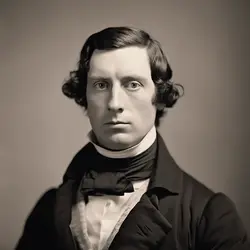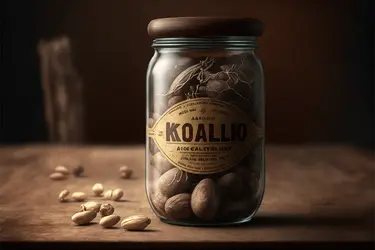This is a timeline of selected events in the life and family of Robert Warren Bradshaw (1807-1898), the inventor of Pepsi in my revised history.
1840-1865
Bradshaw Family Timeline
1753
- June 9
- George Bradshaw is born in London to a family of wealthy merchants.
1773
- June 28
- George Bradshaw converts to Judaism following persuasion from some of his close friends, who were Jewish missionaries.
1774
- June 13
- George Bradshaw opens his own brewery in London, which becomes very successful.
1775
- May 21
- George Bradshaw marries Mary Craddock (born London, July 9, 1754), who had recently converted to Judaism to marry him.
1776
- February 28
- George Frederick Bradshaw, son of George and Mary Craddock Bradshaw, is born in London.
1777
- March 10
- Mary Anne Bradshaw, daughter of George and Mary Craddock Bradshaw, is born in London.
1778
- October 9
- Josephine Marie Bradshaw, daughter of George and Mary Craddock Bradshaw, is born in London.
1781
- February 23
- Richard Henry Bradshaw, son of George and Mary Craddock Bradshaw, is born in London.
1795
- August 11
- Mary Craddock Bradshaw dies of tuberculosis at 41 in London.
1802
- September 3
- Widowed George Bradshaw closes the Bradshaw Brewery to prepare to emigrate from England.
- September 13
- George Bradshaw immigrates to the United States, relocating to New York, NY.
- September 20
- George Bradshaw buys property in New York to reopen the Bradshaw Brewery.
- October 4
- The Bradshaw Brewery reopens in New York.
1803
- August 14
- George Bradshaw, 50, remarries to Elizabeth Warren (born London, August 6, 1772).
1804
- December 15
- Jane Louise Bradshaw, daughter of George and Elizabeth Warren Bradshaw, is born in New York.
1807
- January 5
- Robert Warren Bradshaw, son of George and Elizabeth Warren Bradshaw, is born in New York.
1809
- May 10
- Thomas James Bradshaw, son of George and Elizabeth Warren Bradshaw, is born in New York.
1824
- February 8
- Robert W. Bradshaw marries Martha Victoria Parker (born New York, February 4, 1808).
1825
- January 28
- Abigail Elizabeth Bradshaw, daughter of Robert Warren and Martha Victoria Parker Bradshaw, is born in New York.
1826
- February 15
- Robert George Bradshaw, son of Robert Warren and Martha Victoria Parker Bradshaw, is born in New York.
1828
- January 19
- Frederick Thomas Bradshaw, son of Robert Warren and Martha Victoria Parker Bradshaw, is born in New York.
- September 5
- George Bradshaw retires from the Bradshaw Brewery at 75, leaving the business to his son Robert.
- September 8
- Robert W. Bradshaw takes over his father’s brewery.
1836
- July 19
- George Bradshaw dies of natural causes at 83 in New York.
1837
- Robert W. Bradshaw, who had been struggling with alcoholism since his teenage years (often becoming drunk from drinking too much beer and other hard liquors), takes the advice from a new doctor to stop drinking alcohol altogether. He also begins to attend synagogue more regularly, and becomes more religious.
- Bradshaw begins to distance himself from the Bradshaw Brewery he inherited from his father, increasingly becoming nauseous at the very thought of drinking alcohol.
- Bradshaw develops a deep love for soda pop, especially ginger beer, ginger ale, cream soda, sarsaparilla, and root beer, which he had been drinking since his teens, although he had never cherished soda pop that much until this point in life.
- Bradshaw journeys to London to visit with his half-brother Richard, a pharmacist deeply interested in exotic herbs, spices, and other staples.
- During his visit, he becomes fascinated with kola nuts (caffeinated seeds from kola trees in Africa), and decides he wants to use them in experiments to invent a new kind of soft drink, a sweet carbonated beverage designed to stimulate energy after being consumed, in contrast to alcoholic drinks.
- September 8
- Robert W. Bradshaw closes the Bradshaw Brewery permanently.
- September 11-15
- The old Bradshaw Brewery is transformed into a laboratory.
- September 18
- Work begins at the appropriately named Bradshaw Laboratory for experiments for a formula for Bradshaw’s ideal kola nut-based soft drink.
1839
- May 17
- After over a year and a half of experimentation, the formula for Robert W. Bradshaw’s kola beverage is finished, due mostly to the efforts of Bradshaw himself.
- May-June
- Ideas for a name at Bradshaw’s kola beverage pop up:
- Peppy Cola – this was quickly rejected because it made the purpose of the drink seem too obvious
- Pepsy Cola – this was actually a working title for the new drink
- Pepsi-Cola – this was suggested by one of Bradshaw’s employees at the laboratory, further masking the obviousness of the drink’s purpose; this is approved
- Ideas for a name at Bradshaw’s kola beverage pop up:
- June 10
- Robert W. Bradshaw gets a patent for Pepsi-Cola, and the following week, it is launched into the marketplace and at soda fountains, restaurants, and other dining facilities.
- This process begins first in New York and its surrounding areas, and then spreads rapidly throughout the nation, and soon throughout the world, making the new soft drink a phenomenon.
- June 10-14
- The Bradshaw Laboratory is transformed into a soda pop factory.
- June 17
- The Bradshaw Laboratory is renamed as “The Pepsi-Cola Company”.
1840-1865
- Early 1840
- Pepsi-Cola surpasses soft drinks like ginger ale and root beer in popularity.
- 1861-1865
- Pepsi-Cola is a hugely popular drink in the military, especially among Union soldiers and somewhat with Confederate soldiers, during the American Civil War.
- 1863
- Pepsi-Cola changes its design for the first time since 1839.
- Whereas the original Pepsi-Cola logo was initially bare and surrounded by an all dark blue background, the new logo was made in a red, white, and blue circle with the Pepsi-Cola lettering in the white stripe in between the red one on top, and the lighter blue one on the bottom.
- This move was made to promote American patriotism during wartime, particularly for the Union side.
- Pepsi-Cola changes its design for the first time since 1839.
1854
- January 20
- Elizabeth Warren Bradshaw dies of natural causes at 81 in New York.
1868
- October 12
- Richard H. Bradshaw dies of natural causes at 87 in London.
1897
- July 3
- Martha V. Bradshaw dies of natural causes at 89 in New York.
1898
- October 22
- Robert W. Bradshaw dies of natural causes at 91 in New York.

